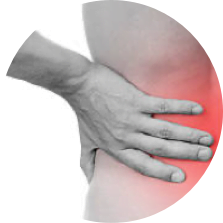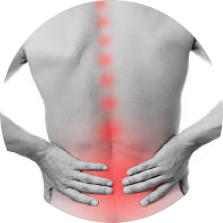Offering a Comprehensive Range of Private Surgical Options for your Musculoskeletal Concerns
Surgical Options
The human body is remarkable, and it can function in ways far more complex than any machine. However, we rarely stop to appreciate what our bodies can do until something goes wrong.
In many cases, our body can heal itself with time and rehabilitation. Still, sometimes the damage is too significant, or age starts to slow the healing process. In these situations, timely surgery is essential.

THE SHOULDER
The shoulder is one of the most complex and mobile joint complexes of the body. It is made up of three bones and three joints – the glenohumeral, acromioclavicular and scapulothoracic joints.
The glenohumeral joint is a ball and socket joint supported by muscles, tendons, and ligaments. The rotator cuff is a group of four muscles that support and move the joint with the help of tendons, tough bands of connective tissue that attach the muscles to the bones. The labrum forms a suction cup-like structure around the joint to provide stability. Further stability is provided by the ligaments that connect the bones.
Shoulder pain is a common problem that affects approximately 10 percent of the population at some point in their lives. Shoulder injuries can include both acute injuries and injuries that have a gradual onset relating to overuse and aging.

THE ELBOW
The elbow is a critical hinge joint that connects the humerus in the upper arm to the radius and ulna in the forearm, allowing for a wide range of movements, including flexion, extension, and slight rotation. The joint is stabilized by robust ligaments like the ulnar collateral ligament and the radial collateral ligament. Additionally, tendons from surrounding muscles, such as the biceps and triceps, play a key role in elbow functionality.
Elbow pain is a common problem, often caused by repetitive stress, acute injuries, or degenerative conditions. Typical injuries include tendonitis—commonly known as tennis elbow or golfer’s elbow—and bursitis, an inflammation of the fluid-filled sac that cushions the joint. Effective treatment for elbow injuries often involves rest, physical therapy, anti-inflammatory medications, and, in some cases, surgical intervention.
THE HAND AND WRIST
The wrist is a complex joint that plays a crucial role in hand movement and flexibility. It is composed of eight small bones known as carpals, arranged in two rows, and is linked to the forearm by the radius and ulna bones. These bones create multiple joints, primarily the radiocarpal and midcarpal joints, which allow for a wide range of motion.
The radiocarpal joint, also known as the wrist joint, is a hinge-like joint that connects the radius to the first row of carpal bones. It's stabilized by a network of ligaments and supported by tendons from the surrounding muscles. The wrist's intricate structure allows for flexion, extension, radial and ulnar deviation, and circumduction, providing versatility in hand movement.
Wrist pain is a common ailment, often resulting from overuse, repetitive stress, or acute injuries such as fractures or sprains. It can also be associated with conditions like carpal tunnel syndrome, where the median nerve is compressed within the wrist, leading to pain, numbness, and weakness in the hand. Proper care, ergonomic practices, and targeted therapies are crucial in managing wrist-related issues.

THE HIP
The hip is a ball and socket joint that is supported by several muscles, tendons, and ligaments. A variety of conditions can affect the hip. These conditions may be present at birth, could result from overuse and sporting injuries, or might be symptoms of aging.

THE KNEE
The knee is a hinge joint composed of two bones, cartilage, the meniscus, and ligaments. The knee is a common site of acute and overuse joint injuries. It is the most common joint affected by osteoarthritis. We work with knee replacement surgeons who specialize in this area.

THE SPINE
Being told you need spine surgery can be overwhelming news. We are able to offer minimally invasive spine surgery, including Single Level Disectomies (Microdisectomies) and Single Level Decompressions (Laminectomies).
A minimally invasive surgical option can help you have a quicker recovery with less post-operative pain and a faster return to full activities.

THE FOOT AND ANKLE
Some conditions in the foot and ankle are due to imperfect structures, such as the height of our arch or the shape of our toes. Other conditions may be due to traumatic injury or overuse. Improper footwear can also cause harm.
To learn more about these conditions and surgical procedures, check out these videos:
